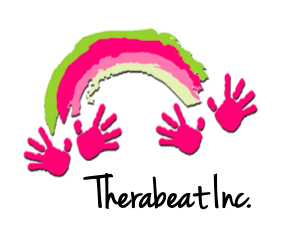Depression is one of the most common mental disorders in the U.S. with more than 3 million cases per year (National Institute of Mental Health, 2018). Depression is defined as a mood disorder that affects virtually every facet of an individual’s life. Depression affects the way in which a person thinks, feels, and executes daily activities of living, such as sleeping, eating, and working (National Institute of Mental Health, 2018). It is normal to feel depressed due to various life circumstances. However, if these symptoms continue for a prolonged period of time, the depressive episode may be diagnosed as a depressive disorder. Depressive disorders refer to the amount of time that symptoms have been present in an individual’s life. An individual is typically diagnosed with clinical depression when they have experienced symptoms continually for at least two weeks (National Institute of Mental Health, 2018).
The most well known symptom of depression is a feeling of overwhelming sadness. However, depression includes many other symptoms that affect an individual’s ability to function. An individual with depression may show a decreased energy level and loss of interest or pleasure in activities that they previously found intriguing. An individual with depression may also show signs of irritability, restlessness, and difficulty concentrating on a task. Depression may also manifest itself in an individual’s sleep schedule and changes in appetite. Finally, depression may lead to thoughts of death and suicide, and may potentially lead to suicide attempts (National Institute of Mental Health, 2018).
Major risk factors for depression include major life changes, trauma, or stress (National Institute of Mental Health, 2018). For the majority of this year, COVID-19 has altered life as we know it. Schools have closed and transitioned to online learning. Businesses have also been affected, resulting in job loss among many individuals. Social distancing has affected the ways in which people can congregate and fellowship. These major life changes may lead to feelings of isolation and depression.
Music therapy has been shown to be effective in addressing emotional, social, and cognitive needs. Music therapy provides a non-threatening environment for the client to express themselves in a healthy way. Music therapists work to enhance the client’s self-awareness and environmental awareness, address problem solving skills, and increase the client’s attention span. Music therapists assist the clients in developing individualized coping skills, problem solving skills, and decision making skills. Additionally, music therapy sessions support healthy feelings and behavior (American Music Therapy Association, 2006).
Receptive music therapy has the ability to modulate a client’s mood through music relaxation (Eyre, 2013, p. 342). Music relaxation interventions involve listening to music for the purpose of effecting a relaxed response. Music relaxation interventions may include guided imagery accompanied with relaxing music as well as progressive muscle relaxation. The overarching goals of music relaxation interventions are to release physical tension and increase a sense of well-being (Eyre, 2013, p. 343). In an ideal music relaxation intervention, the client’s preferred music will be utilized to facilitate a relaxed state, as evidenced by a slowing breathing rate, a slowing heart rate, and an adjusted mood (Eyre, 2013, 344).
Improvisational music therapy involves the spontaneous creation of musical dialogue in music therapy sessions. One study evaluated the effects of short-term improvisational music therapy sessions on the severity of depressive symptoms (Aalbers, Spreek, Bosveld-van Haandel, & Bogaerts, 2017). The music therapy researchers administered a questionnaire before and after music therapy treatment to measure if this form of treatment was effective for clients experiencing depression. Improvisation interventions utilized during music therapy treatment assisted clients to express their feelings, thoughts, and actions in daily life. Over the course of music therapy sessions, the music therapist gradually related improvisation experiences to stimulate healthy thoughts and behaviors through active music playing and discussion (Aalbers, Spreek, Bosvel-van Haandel, & Bogaerts, 2017, p. 262). Results of this study showed an overall reduction in identified depressive symptoms and a significant benefit from music therapy sessions (Aalbers, Spreek, Bosvel-van Haandel, & Bogaerts, 2017, p. 262).
Songwriting in music therapy sessions provides clients with opportunities for self-expression and self-awareness. Songwriting interventions focus on the dialogue created in the creation of the song as well as the final product of the intervention (Silverman, 2013, p. 134). In addition to emotional benefits, songwriting in group settings can allow clients to foster and develop social skills. Silverman (2013) examined the effects of group songwriting among clients with depression and other mental health concerns. Group songwriting, combined with psychoeducational discussion, allowed the clients the freedom to express themselves and interact with others in an appropriate manner. Topics addressed during the songwriting interventions, such as coping skills and support systems. Results of the study found that the group songwriting interventions benefited the participating clients in the social and emotional domains (Silverman, 2013, p. 141).
It is normal to experience depression in response to severe, unexpected life changes. COVID-19 has altered the way many of our lives in ways that were previously unimaginable. It is essential during this uncertain time to take care of both our physical health and our mental health. Music therapy has been shown to be effective in facilitating relaxation, improving mood, and fostering coping skills.
-Jasmine Bailey, Music Therapy Intern
References
Aalbers, S., Spreek, M., Bosveld-van Haandel, L., & Bogaerts, S. (2017). Evaluation of client progress in music therapy: An illustration of an N-of-1 design in individual short-term improvisational music therapy with clients with depression. Nordic Journal of Music Therapy, 26(3), 256-271.
American Music Therapy Association (2006). Music therapy and mental health. Retrieved May 18, 2020 from http://www.musictherapy.org/assets/1/7/MT_Mental_Health_2006.pdf
Eyre, L. (2013). Guidelines for Music Therapy Practice in Mental Health. Barcelona Publishers.
National Institute of Mental Health (2018). Depression. Retrieved May 18, 2020 from https://www.nimh.nih.gov/health/topics/depression/index.shtml
Silverman, M. (2013). Effects of group songwriting on depression and quality of life in acute psychiatric inpatients: A randomized three group effectiveness study. Nordic Journal of Music Therapy, 22(2), 131-148.







